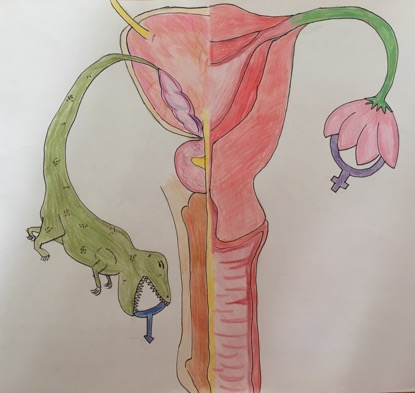Can curing do more harm than good? – The danger in creating ‘normality’.
It is often misconstrued that sex and gender are the same thing: whether someone is male or female. However, sex refers to reproductive organs and biological features, whereas gender is the social and behavioural characteristics a person encompasses, which are more fluid, overlap and are down to personal choice. With this in mind, I created a piece of artwork designed to challenge the social constructs of gender stereotypes and the idea that anatomical sex should determine gender. Estimations suggest, whilst there is limited research, that 0.3% of adults identify as transgender, however this could be as much as 8%, if those with Polycystic Ovary Syndrome were included. Therefore combining gender and sex, treating people as either male or female is over-simplistic within medicine and consideration of the emotional contributors are as important as the biological.

I really like how the piece addresses both the psychological and physiological changes and conflicts that can arise from Polycystic Ovary Syndrome. The flower and dinosaur branching off the reproductive organs highlights the conflict between sex and gender for Rachel as her syndrome develops. Living with this syndrome within our society must be really challenging especially due to the gender specific stereotypes and boundaries that divide and characterise male and females. I really like how this picture has challenged the gender norms within society and provokes thought on whether society requires such constraints on a topic that is not as simple as people may appear.